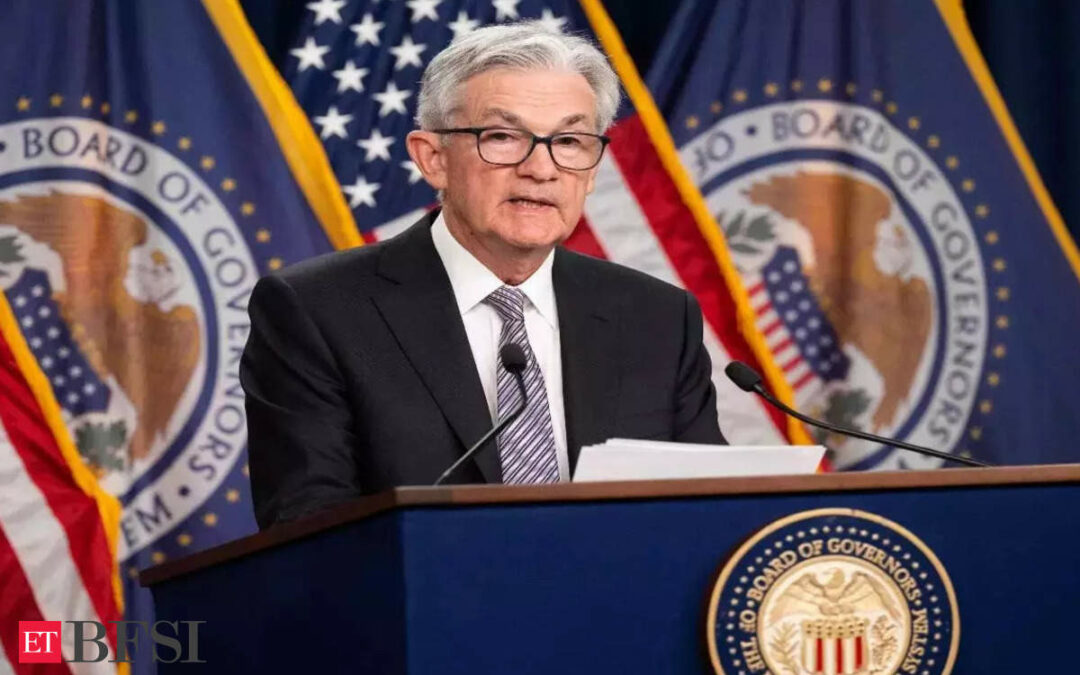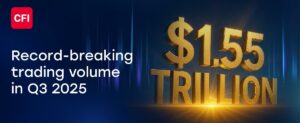The Federal Reserve held interest rates steady for a third meeting and gave its clearest signal yet that its aggressive hiking campaign is finished by forecasting a series of cuts next year.
Officials decided unanimously to leave the target range for the benchmark federal funds rate at 5.25% to 5.5%, the highest since 2001. Policymakers penciled in no further interest-rate hikes in their projections for the first time since March 2021, based on the median estimate.
Here’s the reaction in real time on Bloomberg’s TOPLive blog
Fed officials expect to lower rates by 75 basis points next year, a sharper pace of cuts than indicated in September’s projections. While the median forecast for the federal funds rate at the end of 2024 was 4.6%, individuals’ expectations varied widely.
Eight officials saw fewer than three quarter-point cuts next year, while five anticipate more.
A tweak to the post-meeting statement on Wednesday also highlighted the shift in tone, with officials noting they will monitor a range of data and developments to see if “any” additional policy firming is appropriate. That word was not present in the November statement from the US central bank’s policy-setting Federal Open Market Committee.
In another shift, the committee also acknowledged that inflation “has eased over the past year but remains elevated.” In addition, most participants now see the risks to price growth as broadly balanced.
Treasury yields plunged, while the S&P 500 index rose and the Bloomberg dollar index declined. Swaps contracts indicated more easing in 2024 than previously, showing more than 125 basis points of rate cuts. Odds of a March rate cut rose to about 60%.
Chair Jerome Powell will hold a press conference with reporters at 2:30 p.m. in Washington.
Inflation Forecasts
The updated projections also showed lower inflation forecasts for this year and next, with the Fed’s preferred price gauge excluding food and energy now seen increasing 2.4% in 2024. Policymakers lowered their forecast for economic growth slightly for next year while keeping unemployment projections unchanged.Policymakers anticipate further reductions in the fed funds rate to end 2025 at 3.6%, according to the median estimate of 19 officials.
The Fed’s long-awaited pivot, following 5.25 percentage points of rate hikes, reflects a marked slowing of price pressures since mid-year and a cooling of the labor market. The challenge for Fed officials now is to decide when to start cutting rates, which if done too soon would endanger inflation’s return to the Fed’s 2% goal.
Officials have vowed to keep rates elevated long enough to ensure inflation returns to target. Market participants don’t anticipate that will take very long, encouraging bets of rate cuts as soon as March.
Comments from Governor Christopher Waller, one of the most vocal supporters of the central bank’s actions to tamp down inflation, helped fuel that speculation. He said in November the central bank would be willing to consider lowering the policy rate as inflation comes down, something he said could happen in three to five months.
Yield Pullback
The pullback in Treasury yields in recent weeks has erased much of the run-up seen through the summer and into October. At the time, policymakers suggested the significant tightening in financial conditions could help lessen the need for further interest rate hikes.
The stark reversal has already begun to ripple through the economy in the form of lower mortgage rates, sparking renewed demand in recent weeks to refinance and purchase homes. It’s also gotten cheaper for companies to borrow — something they’re already taking advantage of.
In comments earlier this month, Powell pushed back against market expectations for a rate cut in the first quarter of next year.
“It would be premature to conclude with confidence that we have achieved a sufficiently restrictive stance, or to speculate on when policy might ease,” Powell said Dec. 1, right before the Fed’s pre-meeting communication blackout period.
He and other policymakers have noted the path to 2% inflation will likely be “bumpy,” emphasizing the need for sufficient evidence price growth is firmly headed lower before easing policy.
The central bank has now gone 12 meetings without a dissenting vote — the longest stretch since a 17-meeting period from 2003 to 2005.











